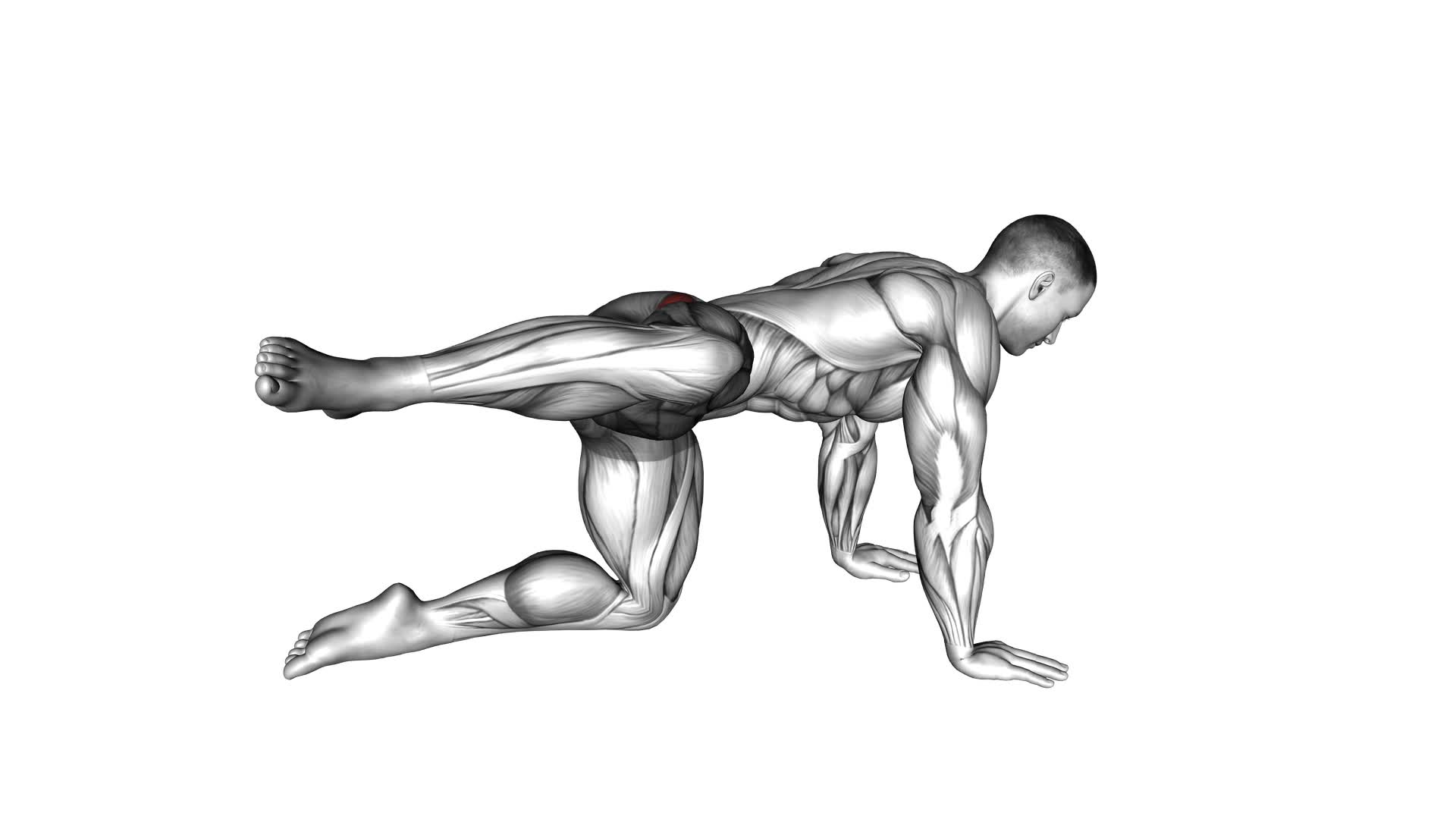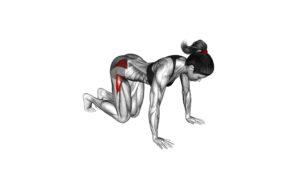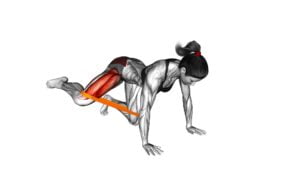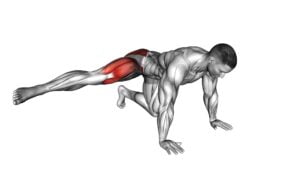Bent Leg Side Kick (kneeling) (male) – Video Exercise Guide & Tips

Get ready to take your workout to the next level with the Bent Leg Side Kick (kneeling) exercise! In this video exercise guide, we will show you the proper form and technique to perform this powerful move.
Watch This Exercise Video
Whether you're a beginner or an experienced fitness enthusiast, we've got modifications for all fitness levels. Avoid common mistakes, increase intensity, and progress with our helpful tips.
Let's kick it up a notch and achieve those fitness goals!
Key Takeaways
- Increased flexibility
- Improved core strength
- Targets specific muscle groups
- Enhances stability and balance
Benefits of Bent Leg Side Kick (kneeling)
You'll experience increased flexibility and improved core strength with the Bent Leg Side Kick (kneeling). This exercise isn't only effective but also targets specific muscle groups, making it a great addition to your fitness routine.
As you perform the Bent Leg Side Kick (kneeling), you'll notice how it engages your core muscles, particularly the obliques and hip flexors. These muscles play a crucial role in maintaining stability and balance, and strengthening them can help prevent injuries and improve your overall performance in other exercises and daily activities.
Furthermore, the Bent Leg Side Kick (kneeling) also works the glutes, hamstrings, and quadriceps. By targeting these muscle groups, you'll enhance the strength and flexibility of your lower body. This can lead to improved athletic performance, as well as better functional movements like walking, running, and climbing stairs.
To maximize the benefits of the Bent Leg Side Kick (kneeling), it's important to maintain proper form throughout the exercise. Keep your core engaged, spine aligned, and shoulders relaxed. Focus on the quality of your movement rather than rushing through it.
Incorporating the Bent Leg Side Kick (kneeling) into your fitness routine won't only improve your flexibility but also target specific muscle groups, leading to a stronger and more functional body overall.
Proper Form and Technique
Maintaining proper form and technique is essential for performing the Bent Leg Side Kick (kneeling) effectively and maximizing its benefits for your flexibility and muscle strength. To ensure you perform this exercise correctly, it's important to avoid common errors and follow these tips for beginners.
Firstly, remember to keep your body upright throughout the movement. Lean slightly forward from the hips, but avoid bending at the waist. This will help engage your core and maintain balance.
Secondly, maintain a strong and stable base by keeping your kneeling leg firmly planted on the ground. This will provide a solid foundation for the kick and prevent unnecessary strain on your supporting leg.
Another important aspect of proper form is to use your hip and glute muscles to generate the power for the kick. Avoid relying solely on your knee or lower leg for the movement. Engaging the larger muscle groups won't only enhance the effectiveness of the exercise but also reduce the risk of injury.
Lastly, make sure to breathe throughout the movement. Inhale as you prepare for the kick and exhale as you execute it. This will help you maintain focus and control.
Modifications for All Fitness Levels
To modify the Bent Leg Side Kick (kneeling) exercise for all fitness levels, adjust the range of motion. For beginners, it's important to start with smaller movements to build strength and stability. Instead of extending your leg fully, focus on kicking at a comfortable height. This will allow you to maintain control and prevent strain on your muscles. As you become more comfortable with the exercise, gradually increase the range of motion, aiming to kick higher and extend your leg further. This will challenge your muscles and improve your flexibility.
For advanced practitioners, you can modify the Bent Leg Side Kick (kneeling) exercise by adding resistance or incorporating variations. You can use ankle weights or resistance bands to intensify the workout and increase the difficulty. Additionally, you can perform the exercise on an unstable surface, such as a balance board or a Bosu ball, to engage more stabilizer muscles and enhance your balance. These modifications will provide a greater challenge and help you progress in your fitness journey.
Common Mistakes to Avoid
To ensure proper form and maximize the effectiveness of the Bent Leg Side Kick (kneeling) exercise, it's crucial to be aware of common mistakes that should be avoided. By avoiding these mistakes, you can improve your balance and get the most out of this exercise.
One common mistake in the Bent Leg Side Kick (kneeling) isn't keeping your core engaged. It's important to maintain a strong core throughout the movement to provide stability and control.
Another mistake to avoid is kicking too high. While it may be tempting to kick as high as possible, it can compromise your balance and form. Instead, focus on kicking to a comfortable height while maintaining control.
Another common mistake isn't keeping your supporting leg stable. Make sure to firmly plant your foot on the ground and distribute your weight evenly. This will help you maintain balance and prevent any wobbling or falling over.
Lastly, avoid rushing through the exercise. Take your time and focus on proper form and technique. By going slowly and deliberately, you can ensure that you're engaging the correct muscles and avoiding unnecessary strain.
Tips for Increasing Intensity and Progression
To increase the intensity and progression of the Bent Leg Side Kick (kneeling) exercise, focus on gradually challenging yourself by incorporating variations and increasing resistance. Here are some tips to help you increase the difficulty and try advanced variations:
- Vary the height: Start by kicking at waist level, then gradually increase the height of your kicks to challenge your core stability and hip flexibility.
- Add ankle weights: Once you feel comfortable with the basic exercise, strap on some ankle weights to add resistance and make your muscles work harder.
- Integrate dynamic movements: Instead of performing the side kick in a static position, try incorporating dynamic movements like a side lunge or a kick followed by a knee drive. This will engage more muscles and increase the difficulty of the exercise.
By incorporating these tips, you can gradually increase the intensity and take your Bent Leg Side Kick (kneeling) exercise to the next level.
Remember to listen to your body and progress at a pace that's challenging but not overwhelming. With dedication and consistency, you'll see improvements in your strength, flexibility, and overall performance.
Frequently Asked Questions
What Are the Potential Risks or Injuries Associated With Performing the Bent Leg Side Kick (Kneeling) Exercise?
When performing the bent leg side kick (kneeling) exercise, there are potential risks and injuries to be aware of. These may include strains or sprains in your leg muscles, especially if you overextend or use improper form.
You could also injure your knee or hip joints if you put too much stress on them.
To minimize these risks, it's crucial to warm up properly, use the correct technique, and listen to your body's limits.
How Many Repetitions and Sets Should I Aim for When Incorporating the Bent Leg Side Kick (Kneeling) Into My Workout Routine?
When incorporating the bent leg side kick (kneeling) into your workout routine, aim for a specific number of repetitions and sets.
The number of repetitions refers to how many times you perform the exercise in one set, while the number of sets refers to how many times you repeat the entire sequence of repetitions.
The ideal number of repetitions and sets may vary based on your fitness level and goals.
It's recommended to consult with a fitness professional to determine the appropriate number for you.
Is It Necessary to Have Prior Experience or Training in Martial Arts or Kickboxing to Perform the Bent Leg Side Kick (Kneeling) Exercise?
Prior experience or training in martial arts or kickboxing isn't necessary to perform the bent leg side kick (kneeling) exercise. This exercise can be done by anyone looking to strengthen their lower body muscles and improve their flexibility.
However, it's always recommended to start with a lower intensity and gradually increase as you become more comfortable. Remember to listen to your body and stop if you feel any pain or discomfort.
Can the Bent Leg Side Kick (Kneeling) Exercise Help Improve Flexibility in the Hips and Lower Body?
Performing the bent leg side kick (kneeling) exercise can indeed help improve flexibility in your hips and lower body. This exercise specifically targets those areas, allowing you to stretch and strengthen the muscles involved.
By regularly incorporating this kick into your workout routine, you can experience increased hip flexibility over time.
The benefits of the bent leg side kick extend beyond flexibility, as it also helps to build core strength and improve overall balance and coordination.
Are There Any Specific Breathing Techniques or Patterns That Should Be Followed During the Bent Leg Side Kick (Kneeling) Exercise?
During the bent leg side kick exercise, it's important to focus on your breathing. Take deep breaths in through your nose and exhale through your mouth. This will help you stay relaxed and maintain proper form. Avoid holding your breath, as it can cause tension in your muscles and make the exercise more difficult.
Additionally, be mindful of common mistakes such as rushing through the movement or not engaging your core. Take your time and perform the exercise with control and precision.
Conclusion
In conclusion, the bent leg side kick (kneeling) is a beneficial exercise that targets the muscles in your legs and core. By maintaining proper form and technique, you can maximize the effectiveness of this exercise.
Remember to start with modifications if needed and avoid common mistakes to prevent injury. To increase intensity and progression, consider adding weights or increasing the number of repetitions.
Incorporate this exercise into your fitness routine for improved strength and stability.

Author
Years ago, the spark of my life’s passion ignited in my mind the moment I stepped into the local gym for the first time. The inaugural bead of perspiration, the initial endeavor, the very first surge of endorphins, and a sense of pride that washed over me post-workout marked the beginning of my deep-seated interest in strength sports, fitness, and sports nutrition. This very curiosity blossomed rapidly into a profound fascination, propelling me to earn a Master’s degree in Physical Education from the Academy of Physical Education in Krakow, followed by a Sports Manager diploma from the Jagiellonian University. My journey of growth led me to gain more specialized qualifications, such as being a certified personal trainer with a focus on sports dietetics, a lifeguard, and an instructor for wellness and corrective gymnastics. Theoretical knowledge paired seamlessly with practical experience, reinforcing my belief that the transformation of individuals under my guidance was also a reflection of my personal growth. This belief holds true even today. Each day, I strive to push the boundaries and explore new realms. These realms gently elevate me to greater heights. The unique combination of passion for my field and the continuous quest for growth fuels my drive to break new ground.







